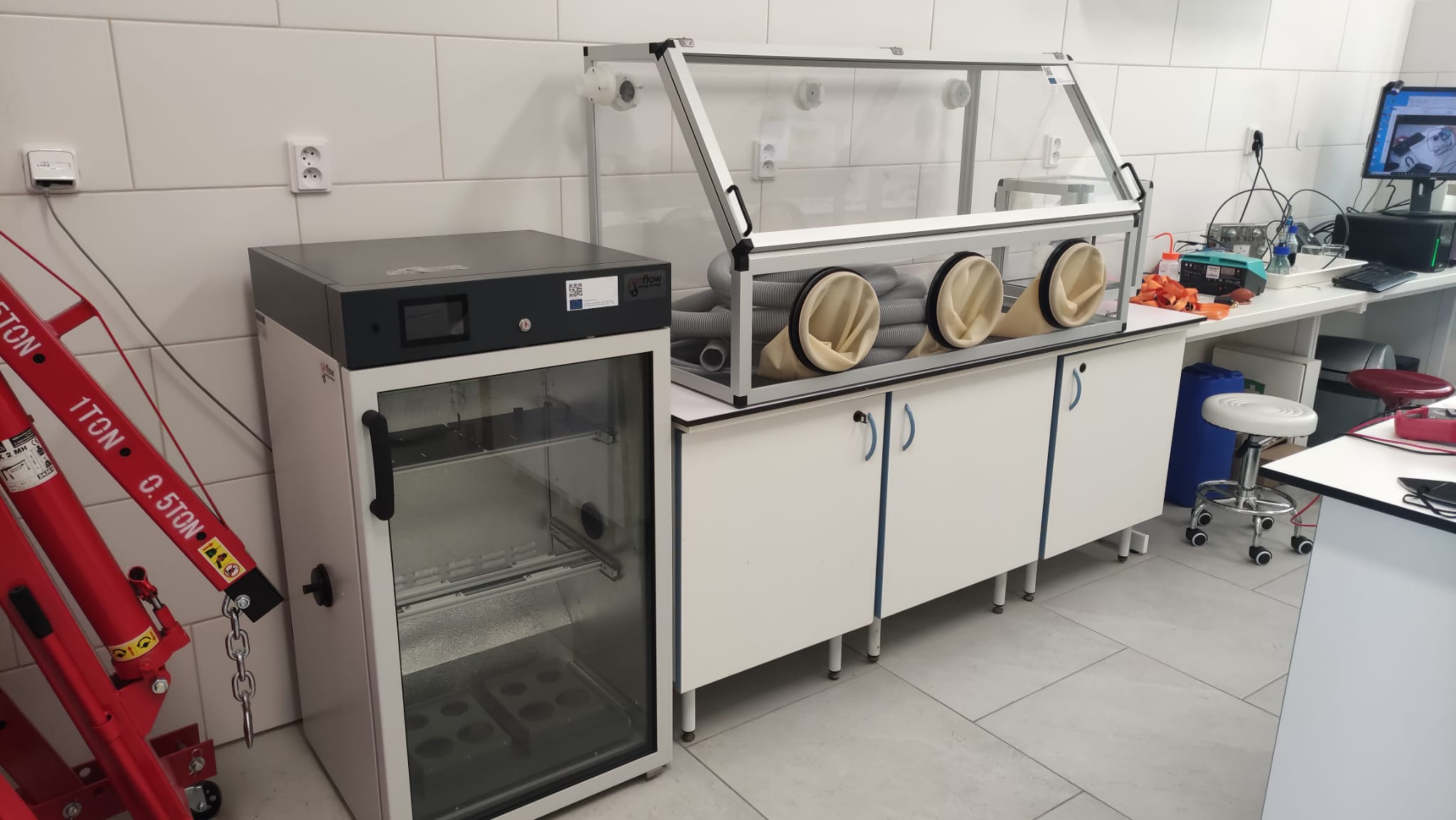As a part of our collaboration with the University of Pavol Jozef Šafárik (UPJS), the synthesis and testing of new aqueous soluble organic electrolytes took place.
Vanadium redox flow battery represents the state of the art because of its astonishing performance. Despite this, the poor availability of Vanadium electrolyte, the poor supply chain as well as other limitations regarding temperature range, vanadium (V) dimerization, high-cost ion exchange membranes have made scientist focus their efforts on the search of different alternatives. Here, organic molecules appear as one of the most promising alternatives being easy to produce worldwide, tuneable and could involve redox reactions with various electrons. So, InoHub R&D team in collaboration with UPJS have been synthetizing 15 new organic electrolytes. Organic chemistry is a vast field where we can find 7 different families of organic redox active molecules, in this sense we have synthetized different triazine, phenazine, viologens and quinones as anolytes and TEMPOL, iron complexes and hydroquinones as catholytes.
After optimizing the synthesis of these compounds trying to make it cost-effective and short, the testing of these new 15 materials will be evaluated. Starting for the 50 cm2 single-cell experiments these materials will be tested using galvanostatic cycling and galvanostatic cycling + potentiostatic holding at currents above 100 mA/cm2 to increase the power density of the RFB batteries. In this way the stability of the materials upon cycling will be elucidated. The polarization curves of the battery at different state of charge will show the interaction the charged and uncharged molecules with the membrane and electrodes. Finally, by holding the molecules at different state of charge (from 10 to 90 %) the chemical stability of the charged molecules will be understood.
Organic molecules for redox flow batteries represent a promising future however, a huge amount of work must be invested in the optimization of the organic electrolytes performance as well as their compatibility with the other battery components.
ACKNOWLEDGEMENT:
This work was supported by the project: IPCEI_IE_FLOW_BESS_012021


